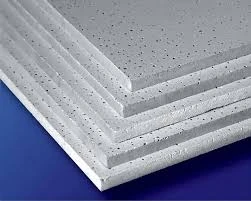Nov . 30, 2024 10:23 Back to list
drop ceiling tile grid
Understanding Drop Ceiling Tile Grids An Overview
When it comes to interior design and architecture, drop ceilings—often referred to as suspended ceilings—play a vital role in both aesthetics and function. These ceilings are not only a popular choice in commercial spaces but also in residential homes, particularly in basements and other areas where a lower ceiling might restrict design choices. One critical component of a drop ceiling system is the tile grid, which serves as the backbone for the tiles that create the ceiling’s finished look.
What is a Drop Ceiling Tile Grid?
A drop ceiling tile grid is essentially a framework that supports ceiling tiles. It is composed of metal grid pieces that hang from the existing ceiling structure with the help of wires or rods. This grid system provides the necessary support for the individual tiles, which can be made from a variety of materials including mineral fiber, acoustic tiles, and even metal options. The grid is usually arranged in a square or rectangular pattern, allowing for easy installation and replacement of tiles.
Benefits of Using a Drop Ceiling Tile Grid
One of the primary benefits of a drop ceiling tile grid is its versatility. It allows for easy access to utilities, such as electrical wiring and plumbing, that may be running above the ceiling. If repairs or inspections are needed, tiles can be lifted or removed without significant disruption to the overall ceiling structure. This accessibility is particularly advantageous in commercial buildings, warehouses, and office spaces.
Another significant benefit is the acoustic properties of the ceiling tiles. Many tiles are specifically designed to absorb sound, making them ideal for environments where noise reduction is essential. This feature is especially beneficial in schools, libraries, restaurants, and conference rooms, where a quieter atmosphere enhances productivity and comfort.
Aesthetic flexibility is yet another advantage of using a drop ceiling tile grid. With a wide range of tile materials, colors, and textures available, designers can create various looks, from sleek and modern to warm and traditional. This flexibility allows homeowners and businesses to craft spaces that align with their brand or personal style.
drop ceiling tile grid

Installation Considerations
Installing a drop ceiling tile grid can be a DIY project for those who are handy, but it still requires careful planning and execution. The process typically begins with determining the height at which the grid will be set, factoring in the space needed for tiles and any above-ceiling installations. Indicators for the grid should be marked, and the main runner channels need to be securely affixed to the existing ceiling.
Next, cross tees are installed to complete the grid framework, providing support for the ceiling tiles. Finally, the tiles are inserted into the grid—this step is often quite satisfying, as it brings the project to completion visually.
Maintenance and Longevity
One critical aspect of maintaining a drop ceiling tile grid is ensuring that the tiles remain clean and intact. Over time, dust and dirt can accumulate, reducing the aesthetic appeal and potentially affecting the acoustic properties of the tiles. Regular cleaning can enhance longevity, while replacing damaged tiles is fairly straightforward, thanks to the grid's design.
Moreover, aesthetic updates can be made easily. Whether it’s due to changing trends or personal preferences, swapping out ceiling tiles for different styles or materials can rejuvenate a space without the need for extensive renovations.
Conclusion
Drop ceiling tile grids offer an effective solution for both functional and aesthetic needs in various settings. Their practicality—coupled with the stylish possibilities they present—makes them a popular choice for designers and homeowners alike. Whether you are considering a drop ceiling for a basement remodel or seeking to improve the acoustics in a workspace, understanding the role and benefits of the tile grid is essential for making informed decisions regarding your ceiling installation.
-
Durable Ceiling T Grid Systems | Easy InstallationNewsAug.29,2025
-
PVC Gypsum Ceiling: Durable, Laminated Tiles for Modern SpacesNewsAug.28,2025
-
Pvc Gypsum Ceiling Is DurableNewsAug.21,2025
-
Mineral Fiber Board Is DurableNewsAug.21,2025
-
Ceiling Tile Clip Reusable DesignNewsAug.21,2025
-
Ceiling T Grid Modular DesignNewsAug.21,2025







